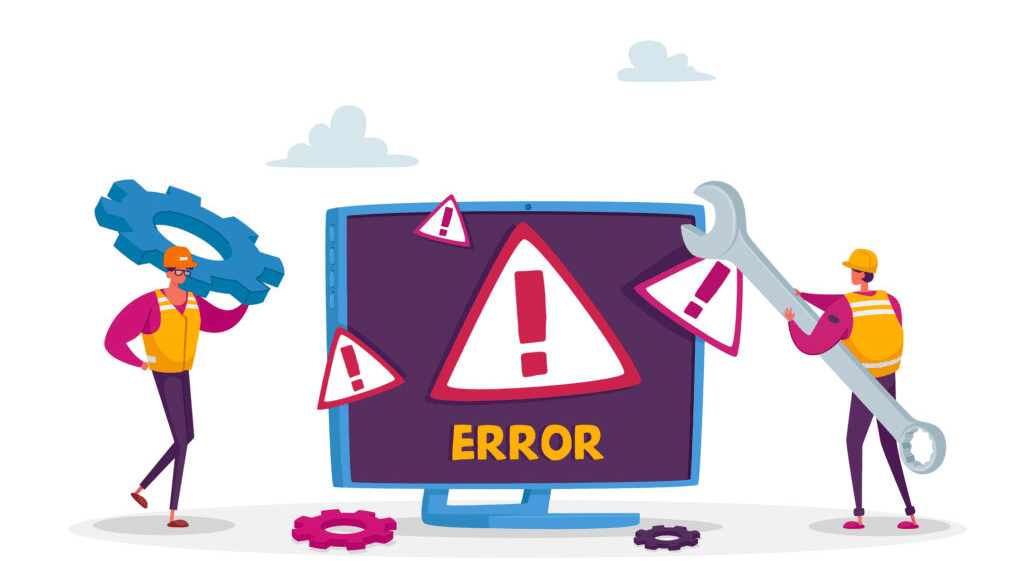
The world is constantly evolving, with new technologies and workflows emerging constantly. However, one thing that has remained constant is insecure practice resulting in IT Issues. There have been a few “usual suspects” of security negligence that have emerged over the years. These too, have stayed relatively stable.
Often time, these security holes actually arise from very simple situations which just go ignored for too long.
All it really takes to solve any of these problems is a little more attention. Sometimes money is necessary, but it all starts with a little bit of care and foresight.
Below, we will go over some of the most common IT issues which businesses have to deal with today. In addition, we will discuss how to solve these issues or at least reduce their impact.
Outdated Software and Hardware
It would scare the average individual, if they knew how many machines were still running Windows XP in the corporate environment. Sometimes, we find ourselves in a situation where the hardware should be upgraded but it would pose too big of a cost in terms of time and money.
These deficiencies can go overlooked for a very long time, and get more severe in nature over time. Old software is prone to crashing, breaking during an update, using insecure encryption, or producing corrupt data.
The software side is actually quite easy to fix. Usually, it costs a lot less to upgrade software than hardware, and the cost can be cut down to a subscription. If the software tools you are using are still of value to your company, definitely invest in the upgrade.
Out of date hardware can be just as big of a pain to deal with, just for different reasons. As hardware gets older, it stops being supported, or it is unable to process newer software upgrades. Therefore, it becomes unstable and prone to crashing altogether. In addition, you face the following issues:
- No support from the hardware or software manufacturers,
- Security holes which cannot be patched,
- Frequent crashing of the system,
- Productivity and opportunity costs.
Little to No Security Culture Among Employees
Security starts from within the organization, and it starts with every single employee on the network. If the people don’t have a security-based mindset then you can rest assured, eventually something is going to go wrong.
For example, do your employees understand the threat of social engineering, do they understand how to spot a suspicious email with malicious links? If the answer is no, then you can only expect that in the long-term, somebody will succumb to these easy attack vectors.
As an individual reading about these issues, you might be equally responsible for the security mindset being distributed throughout the company. When you fail to set up training, and reinforce basic security guidelines, security will be mostly overlooked by the employees.
This can be solved quite easily however. Set up well-defined and strict guidelines for the employees while working on the organization’s network. This can include training sessions on what is and isn’t allowed on the company computers and network, setting enforcement policies both programmatically and through discipline.
An equally important step is awareness training of the most common threats in cybersecurity. This will include how to spot phishing attempts, dark web threats, the importance of 2FA, and the consequences of employees not doing their part.
Improperly Configured Hardware
Upgrading and changing your IT infrastructure to include new technology is great! However, many companies have issues with documentation and integration. Perhaps it works 90% of the time, but 10% of the time, there are quality of service issues. Or perhaps the new system works, but it’s got security holes as a result of a workaround.
This is understandable. Upgrading systems is difficult because there could be vast incompatibilities between vendors and age of the devices. It’s also hard to properly configure everything, even if it is all compatible.
There are a few guidelines to reduce this risk:
- Have a clear intention in mind when upgrading or making changes.
- Do your research first, and pick the best fit.
- Make your employees aware of the change, and train them if necessary.
- Make sure you have a plan if things go wrong.
- Stay inside established budgets and timelines.
Lack of Comprehensive Planning for IT Issues
Not having a plan in place is a big issue which plagues many organizations. It can be very hard to sit down and plan something of substance. Often times, the IT department is swamped with trivial matters, and there’s not much time to sit down to orchestrate grand plans.
However, if there isn’t an overarching plan to ensure that all parts of the system are up to date, compatible, resilient, and expandable, you will have issues down the road.
Some of the most common issues you will experience from lack of planning are:
- Higher vulnerability to attacks, since the system will likely have security holes.
- Employees will become frustrated with the constant issues plaguing their systems.
- You will constantly be behind, and as such, make the wrong decisions.
- Frequent downtime will also likely play a part in your business activities.
It’s easy to list off all these things of course, but it can be quite hard to fix the issues. Many SMBs – small medium businesses – have limited resources, and smaller or no IT departments. Without these resources, it can be hard to impossible to fix all these issues.
However hard it can be, you need to start somewhere. A basic plan is better than no plan at all.
Fix Your IT Issues – Don’t Go IT Alone
Help doesn’t need to be outrageously expensive or out of reach. At LiveLinx, we offer managed services which are affordable and flexible. You pay for what you need, and take the relationship at your own pace. Having a working relationship with an MSP can dramatically improve your IT infrastructure for a low cost.
Contact us today for a free consultation.

8 thoughts on “Most Common – and Overlooked – IT Issues”
Pretty! This has been a really wonderful post. Many thanks for providing these details.
Pretty! This has been a really wonderful post. Many thanks for providing these details.
I very delighted to find this internet site, just what I was searching for as well saved to fav
Awesome! Its genuinely remarkable post, I have got much clear idea regarding from this post.
I very delighted to find this internet site on bing, just what I was searching for as well saved to fav
Awesome! Its genuinely remarkable post, I have got much clear idea regarding from this post
This is my first time pay a quick visit at here and i am really happy to read everthing at one place
Pretty! This has been a really wonderful post. Many thanks for providing these details.